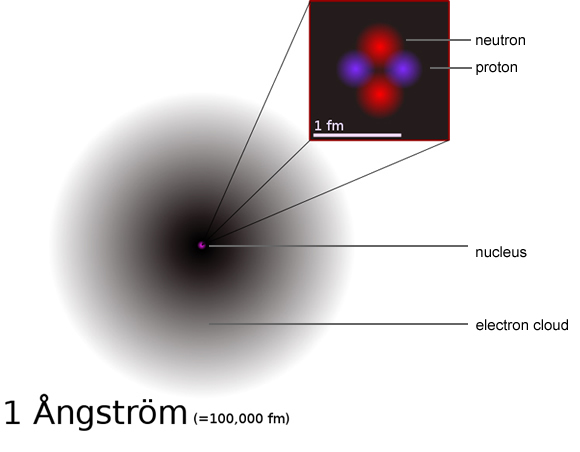Background Review
Before you dig right in with the study of nuclear reactions, let’s review some basics. These introductory ideas will be essential to understanding nuclear reactions. Download the periodic table. You will need it for the remainder of this unit.

In this illustration, you see a helium atom. The nucleus is the pink dot in the middle and it is highlighted in the box. The nucleus contains 2 red protons and 2 blue neutrons. The atom’s electrons stay in the grey electron cloud that surrounds the nucleus. Notice on the scale that the unit of measurement used is the angstrom. An angstrom is a unit of measure equal to 10-10 m, which is 0.0000000001 meters.
There are 117 known elements. Their atoms all have similar structures to the one above, with a nucleus surrounded by an electron cloud. But each element is unique in that each element has a unique number of protons in its nucleus. Helium always has 2 protons, carbon always has 6 protons, lead always has 82 protons, etc. The number of protons that an element has in its nucleus is the element’s atomic number. You can find the atomic number of an atom in the periodic table of the elements. Take a look now at the periodic table and notice the number above the symbol for each element—that’s the atomic number.